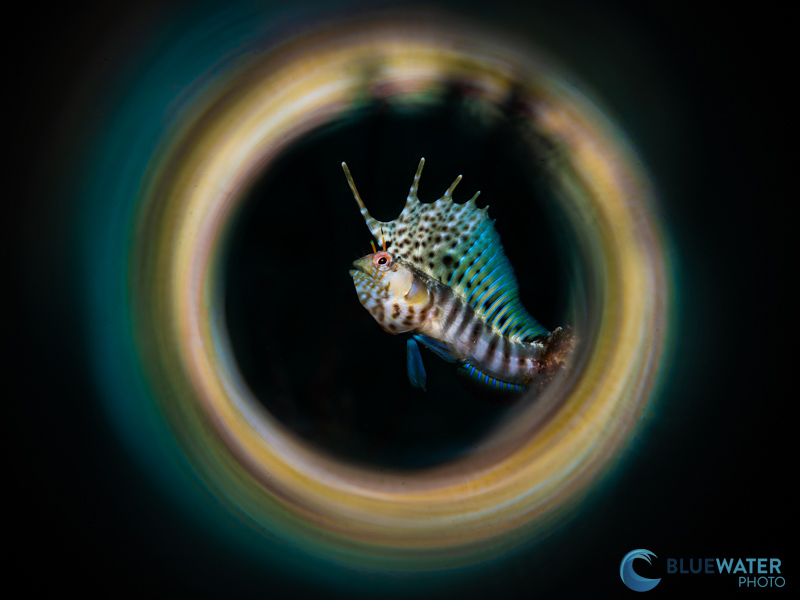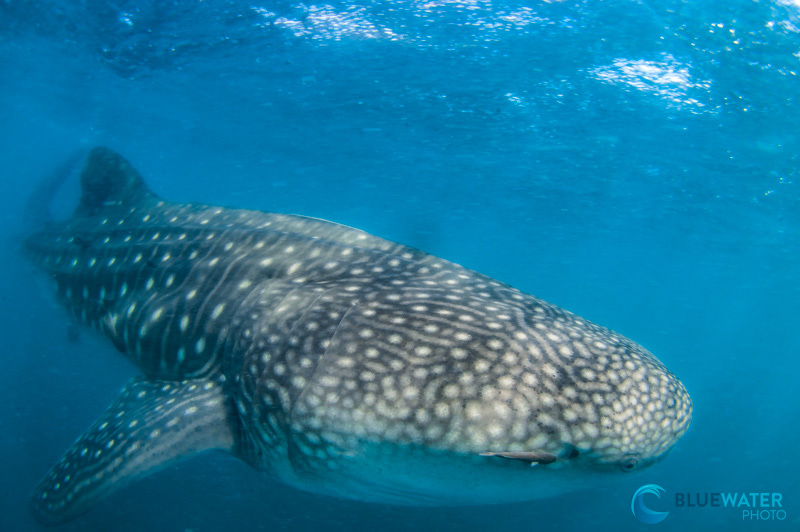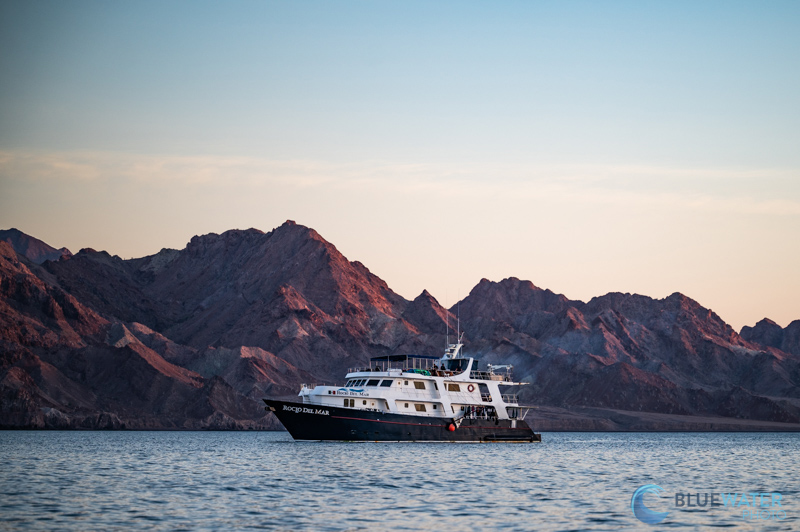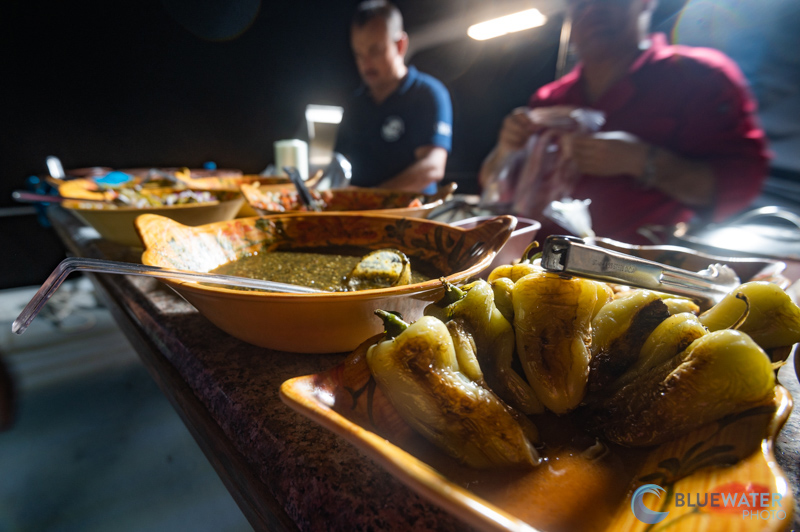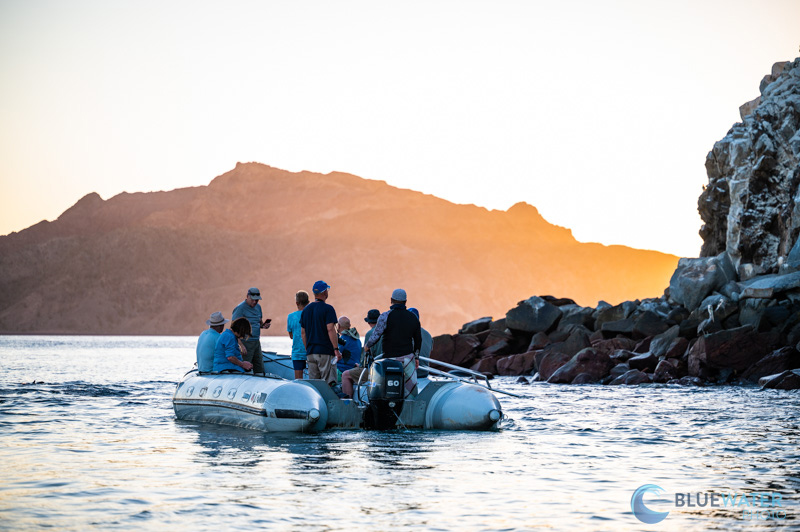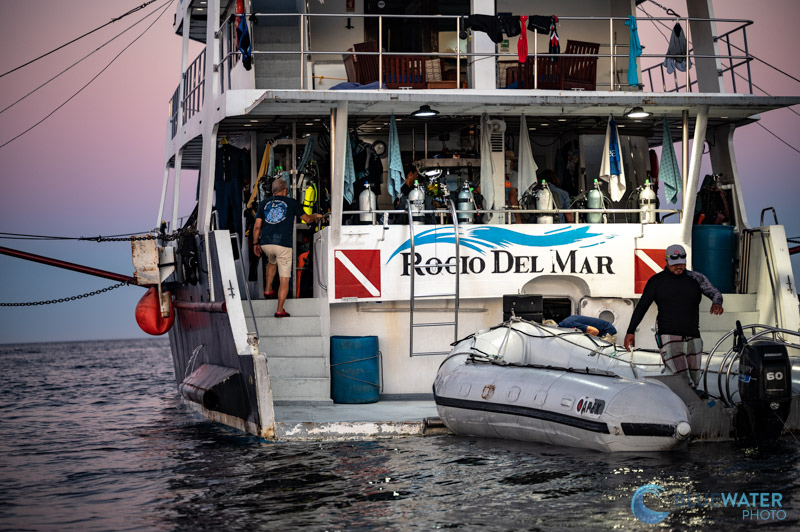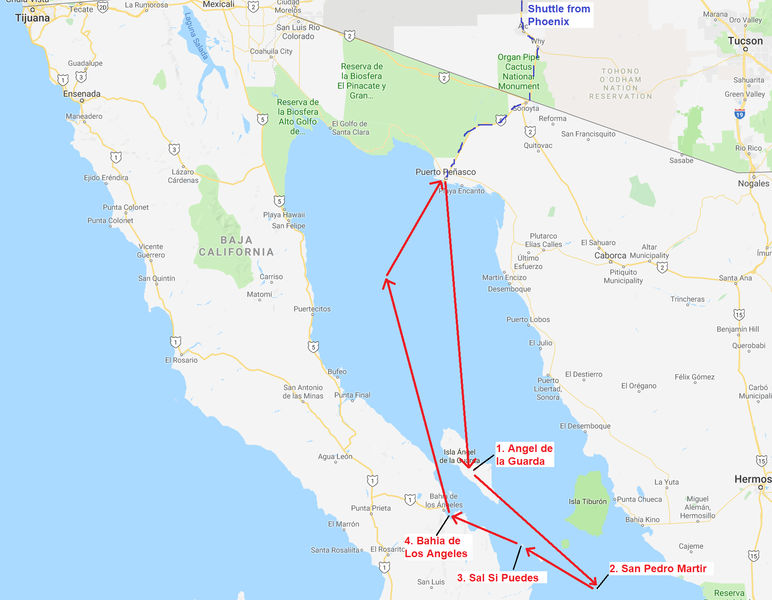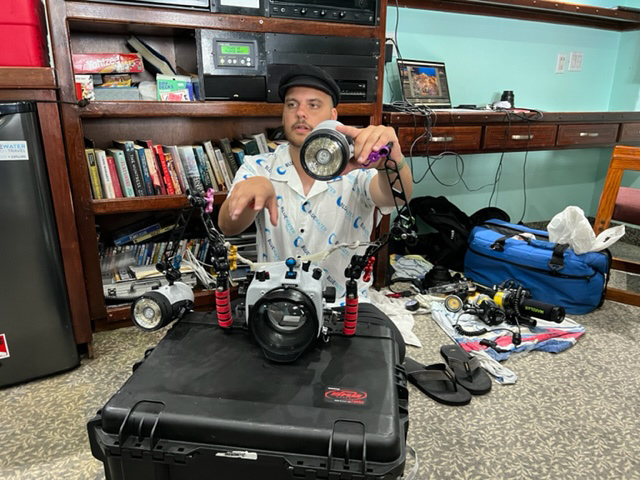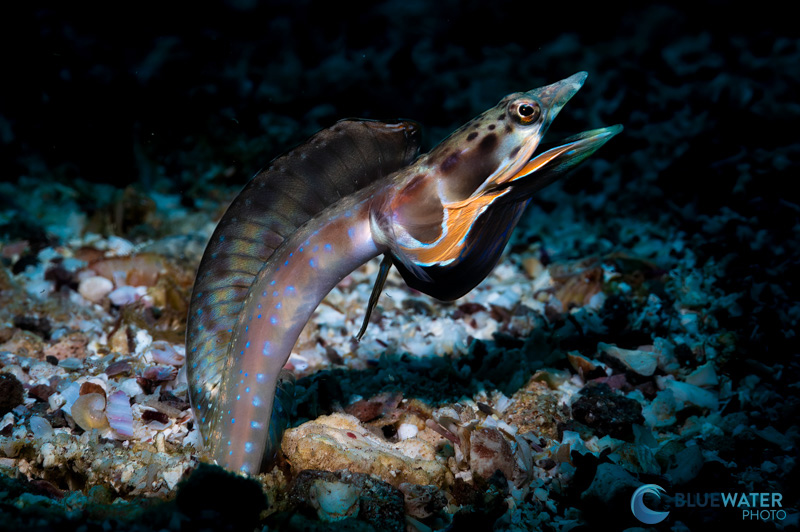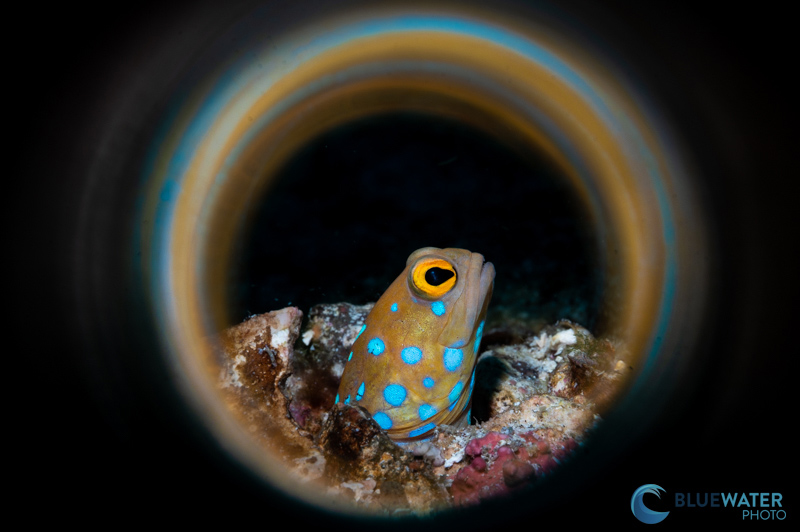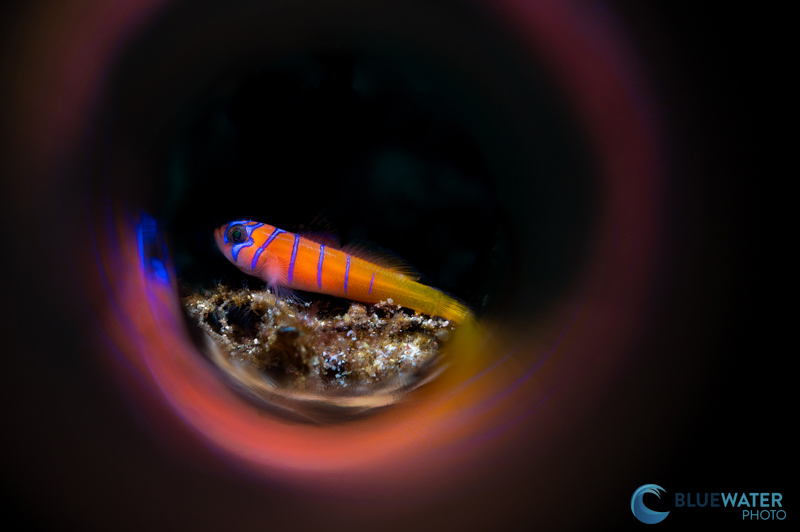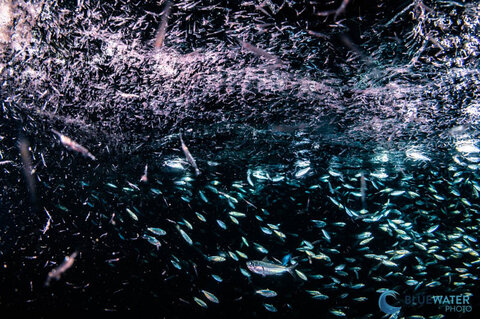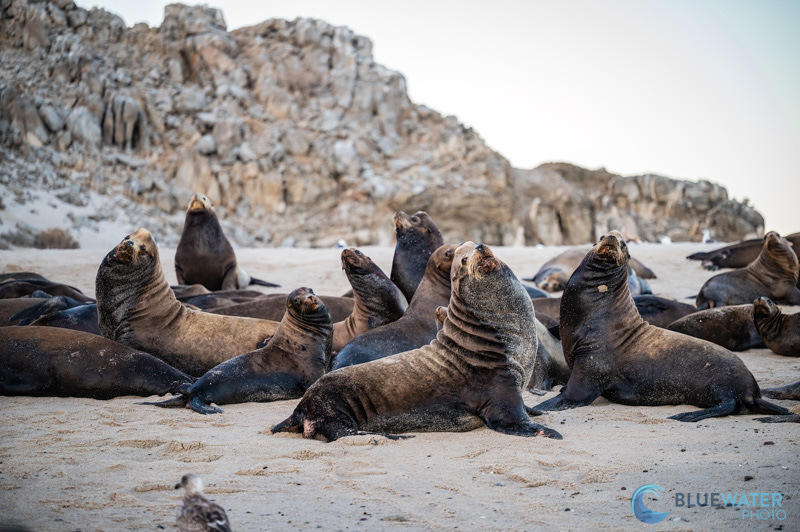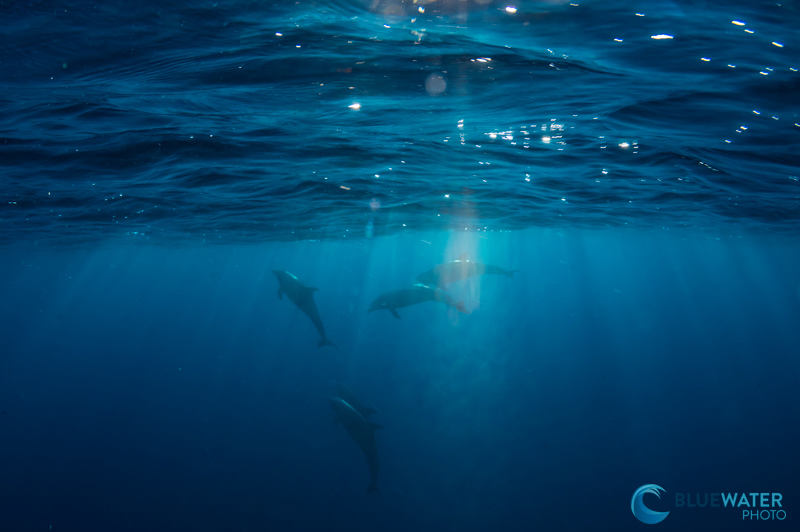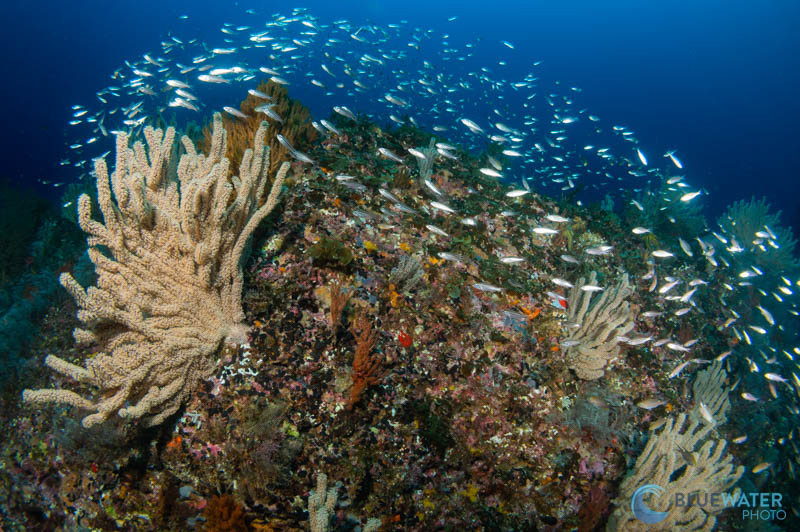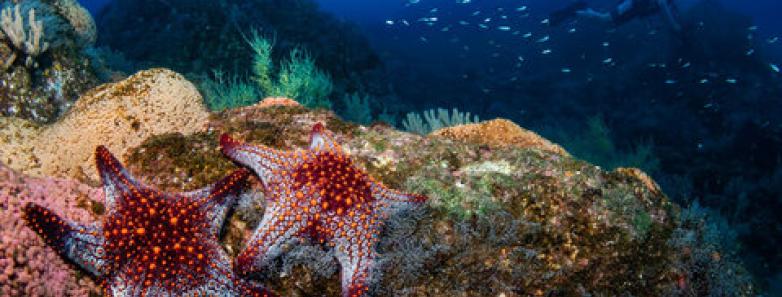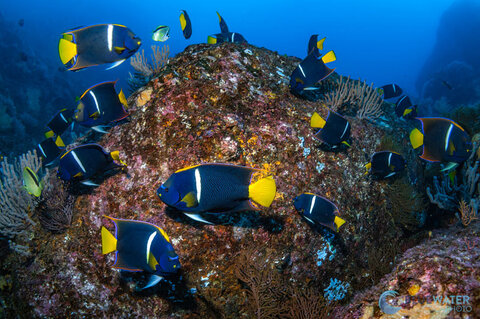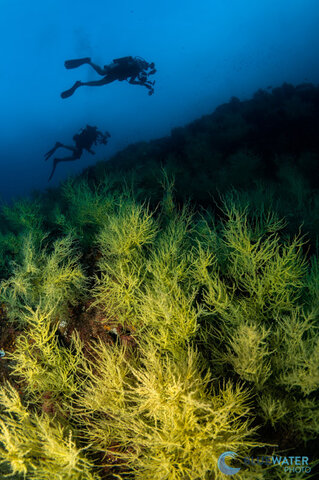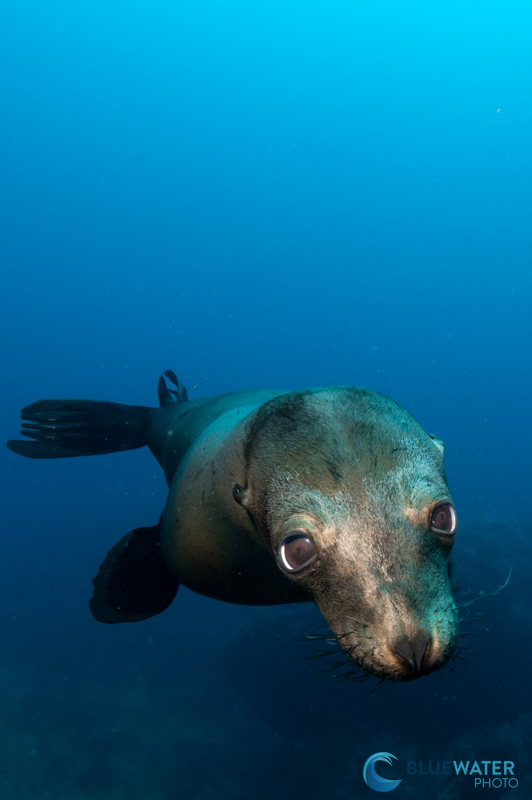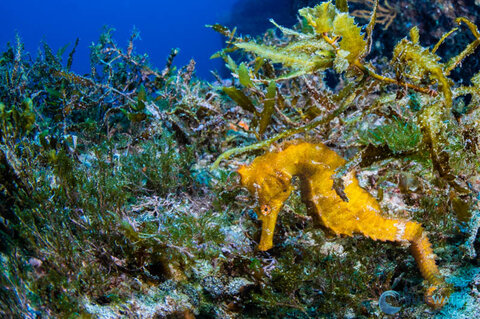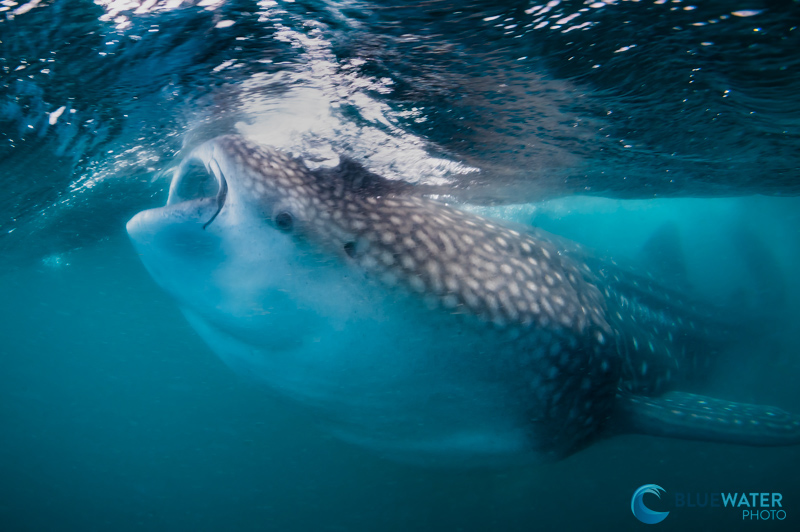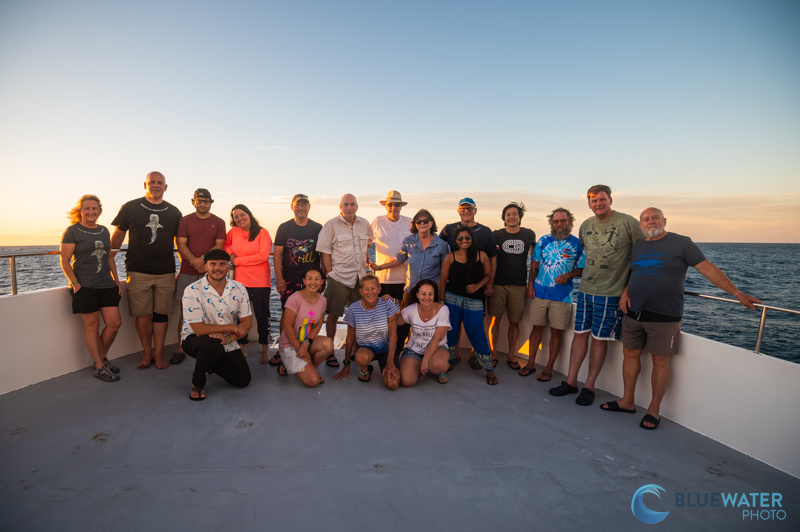Sea of Cortez Trip Report
Bluewater Travel's Sea of Cortez Underwater Photo Workshop
Aug/Sept 2022
Words by Nirupam Nigam, photos by Nirupam and guests
Nirupam's camera gear: Underwater photos taken with Nikon Z6 and Ikelite Housing. Macro photo were captured with the Nikon Z 105mm macro lens and wide angle photos were captured with the Nikon F 8-15mm fisheye lens. Photos were captured with the Ikelite DS 230 strobes.
Have you ever sifted through grains of sand on the beach, contemplating whether or not those individual grains were truly discernable to your naked eye? Diving in the Sea of Cortez can be a little like that. Monotonous white sand as far as the eye can see, and yet a brief pause in your frog kicks reveals a flamboyant drama of the tiniest of fish, dancing under a glittering hot sun.
(Left) A tiny 1-inch long reveals its position with a colorful dance in a desert of sand. (Right) The same signal blenny photographed with a saga magic tube
And on the other side of the coin, massive figures with Van Gogh patterns can swim by at a moments notice on the hunt for the smallest of krill. Or playful sea lions may emulate your every move and tug gleefully at your fins.
Van Gogh patterns on a whale shark on the hunt for krill in Bahia de los Angeles
The Sea of Cortez, aka Gulf of California, may be unassuming as far as seas go, but it is perhaps one of the most overlooked bodies of water on the planet. Endemic critters of all shapes and sizes await the intrepid explorer - particularly those not afraid to dive within driving distance from Phoenix.
The Vessel and Itinerary
An adventure to the Sea of Cortez with Bluewater Photo & Travel begins with the premiere dive liveaboard in the sea – the Rocio Del Mar. The Rocio was designed for diving from its inception. It features stabilizers to mitigate rough crossings, a dive deck with a dedicated camera table, a video room for teaching photo workshops, comfortable cabins with ensuite bathrooms, and most importantly - a world class crew and cook. The dive guides and captains employed by the Rocio are the reason people keep coming back. Beyond their jovial demeanor, they hold decades of experience in the Sea of Cortez. This means they are often able to find rare and exciting critters some spend their whole dive careers looking for - like signal blennies, pacific seahorses, and sometimes even frogfish. The captain on our trip, in particular, used his knowledge to skillfully navigate our home for the week through rough seas, hurricanes, and passing storms. And perhaps most importantly, the food aboard the Rocio del Mar continues to be world class. The food is the reason I keep coming back, of course! Finally, the diving from the vessel is like clockwork – we were split into three dive groups so that only one group was on the dive deck or part of a dive site at a time.
(Left) The Rocio Del Mar. (Right) Grilled tacos on the top deck after our sunset cruise - an all-time Favorite!
(Left) Pangas are used to transport dive groups. (Right) A panga gets ready to load tanks
After a four hour drive to Puerto Peñasco (aka Rocky Point) and a quick evening crossing aboard the Rocio to the Midriff Islands, you're in the middle of North America's macro "muck diving" heaven. The highlights of the first half of the trip are the little flashes of color you can find in the sand - like nudibranchs, bluespotted jawfish, orangethroat pikeblennies, signal blennies, blue banded gobies, and scorpionfish. The second half of the trip is all wide angle opportunity featuring stunning black coral reef scenes, ample sea lion action, and a day of snorkeling with whale sharks. While water temperatures are often variable in the Sea of Cortez - the water was very warm on our trip averaging about 80-86 F. As we travelled farther south the visibility cleared up and became a nice azure with 50-100 ft of visibility. The start of the trip can be lower visibility of about 30-40ft at times and greener water.
The Photo Workshop
The best way to improve your skills as an underwater photographer is to be surrounded by like-minded people. I find that I always learn something new from leading an underwater photo workshop. With a wide variety of experiences among our guests, it's easy to create new ideas and find new ways to capture the beauty of our planet, regardless of the image capturing device. Whether our guests had a GoPro, DSLR, or mirrorless cameras, everyone captured something new and improved their skills.
Trip leader Nirupam Nigam teaching a class
Every day, either after lunch or dinner, I taught an underwater photography topic pertinent to the dives that we were doing – ranging from “macro photography” to “gopro video” to “Adobe Lightroom.” After intensive discussions on topics, we would put them into practice underwater, and often finish up the evenings reviewing images and editing them in lightroom. At the end of the trip we held a friendly photo contest where the crew judged our images. It was spectacular to see how well everyone progressed - many participants being first time underwater shooters or with new camera systems.
The Diving
Days 1 & 2 Isla Angel de La Guarda
Isla Angel de La Guarda may not have a seascape that rivals the coral triangle, but it certainly has muck diving opportunities that do. And though the sea crossing after we departed port was rather rough, the rugged desert island we encountered was well worth it. As we dropped into the clear blue waters of the Sea of Cortez for the first time, it was easy to overlook little flutters in the sand. But as we slowed down and got used to the moonscape topography, beautiful flashes of color materialized into focus - in the form of nuptial bluespotted jawfish, orange throat pike blennies, and signal blennies looking for mates.
(Left) An orangethroat pikeblenny faces up against another male.
(Center) A female bluespotted jawfish looks out at sandy substrate from her hole
(Right) Bluebanded gobies may be common, but their colors are brilliant
Krill swarmed around us, driving the ample life and complex food chains of the Midriff Islands. Often the krill or passing currents could impact visibility turning the water into a murkier green soup. But it mattered not as our sights were focused on the dances of tiny male blennies - bobbing up and down in the current. At night, the food chain driven by the krill was on full display in the form of sardines flanking our stern. I attemped to take some long exposure night photography off the back deck to illustrate sardine predator and krill prey.
(Left) Sardines feed on krill behind the stern of the Rocio Del Mar. (Right) Male sea lions watch us approach their beach during our sunset cruise
Day 3: The Dolphins of El Morro
On the morning of our third day, we awoke to the sound of a bell ringing.... dolphins!! A large pod was passing by the boat and we quickly rushed into the pangas to get a quick dip in with the dolphins before breakfast. Although they were a little more shy than we hopped, most of us did see them in the distance in ethereal morning light.
Dolphins in the Morning Light
As it turned out, the dolphins would hang around our dive site for the rest of the day - El Morro. In my opinion, El Morro is the pinnacle of diving in the Sea of Cortez. In fact, it is quite literally a pinnacle with beautiful walls of black coral descending along a sheer wall. Anything is possible at El Morro.... We were lucky enough to have multiple friendly encounters with turtles, our first encounters with friendly sea lions, and one group even saw a hammerhead shark!
(Left) School of fish at El Morro. (Right) Colorful seastars at El Morro
(Left) A school of king angelfish at El Morro. (Right) A black coral wall at El Morro
For a similar camera, check out the lastest Nikon Z8 review and the Nikon Z8 underwater housings
Days 4 & 5 Sea Lion Fun at San Pedro Martir
After El Morro, the diving just got better and better. Accross a small straight from the pinnacle sits San Pedro Martir. With a melancholy history of laborous guano extraction, it's a uniquely historic island. It appears almost covered in snow from all the guano, with a thick forest of cactus on top. Below it's sheer cliffs frequented by brown footed boobies, sea lions play in crystal blue water. And the sea lions were certainly very playful!! No matter what site we dived, they followed us along the walls of the island. Young, boisterous sea lions would nip at the fins of anyone swimming buy. The larger male sea lions were benign and did not mind the presence of divers.
(Left) A playful sea lion. (Right) Pacific seahorse
Beyond the normal sites of green moray eels, turtles, scorpionfish, rays, and coral - the highlight of San Pedro Martir was the elusive pacific seahorse spotted on multiple dives.
After the first day of diving at San Pedro Martir we did a nice night dive under the milky way. Nudibranchs were plentiful and some groups saw dozens!
Day 6 Whale Sharks at Bahia de Los Angeles
Bahia de Los Angeles is normally a calm, pristine bay on a remote shore of the Baja Peninsula - and the stomping grounds of young juvenile whale sharks. Yet, it always seems like a storm is approaching on the last day - this time it was a hurricane. Although the winds were picking up after a current-ridden morning dive, we boarded local pangas to search for the world's largest fish. And though white caps filled the bay, we were spectacularly lucky with our finds. Our group swam with no less than seven individuals that were feeding at the surface of the water, swimming, and having an all-around good time. Though it was a little difficult to get photographs of them due to the limited visibility caused by krill and the approaching storm, it is always a special experience viewing an animal larger than your boat.
As soon as we got back to our vessel, we pulled anchor and got ahead of the impending hurricane, sailing for home.
(Left) A whaleshark feeds in the bay before the hurricane. (Right) The Group
Join our next trips to Sea of Cortez:
Sea of Cortez Photo Workshop August 2023
Sea of Cortez Photo Workshop August 2024
Sea of Cortez Photo Workshop August 2025


